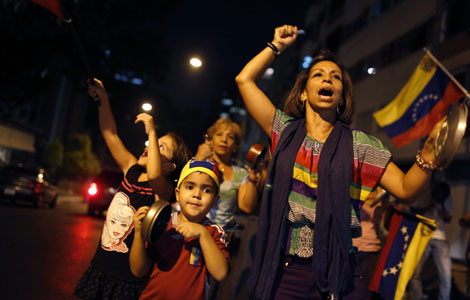S. Koreans face lonely deaths as traditions fade
Updated: 2013-01-21 14:27
(Agencies)
|
||||||||
Poverty adjacent to "Gangnam style"
While South Korea and Seoul were catapulted onto the global map by rapper Psy's "Gangnam Style" hit featuring the affluent suburb south of the Han River, the reality for older people is far less glamourous.
A toilet is the first thing you see when you step into 73-year-old Kong Kyung-soon's tiny apartment. It has barely two square meters of living space despite being adjacent to Gangnam.
Kong, who boils water in a rice cooker to save money, divorced more than 30 years ago after her husband was caught having a string of affairs. A love child, she says, was the final straw.
"If I get sick, it will just be the end for me," she said, adding she pays 360,000 won ($340) a month for rent and living costs out of the roughly 500,000 won she gets from government welfare checks and public transportation subsidies.
She is one of 234,000 elderly South Koreans, or 19.7 percent of all those over 65 years old, living alone as of last year, who were living on government welfare. No data is available on what percent of those are female.
When asked why she didn't ask for help from her children, Kong said times have changed and she should care for herself.
"Whenever I tell my sister I want to die, she tells me I can after I make 500,000 won for my funeral expenses," said Kong, wiping tears from her eyes. Her sister, two years her senior, lives with her husband in another neighbourhood.
"I have prayed to the Lord that I will do good if he can spare me just 10,000 won."
The South Korean government tries to help, but in a nation where welfare spending came at second lowest among OECD countries in 2009, resources are limited.
It passed its first wide-ranging law on welfare for the elderly in 1981, focusing on the early detection and treatment of illnesses as well as the well-being of the elderly.
Services that send a caretaker to visit the home of elderly people living alone at least once a week started in 2007. These caretakers usually keep in contact with an average of 30 elderly citizens and are instructed to call them frequently.
Local governments in some areas take a more subtle approach by leaving small bottles of popular yogurt drinks at front doors every day. If unopened bottles start piling up, it's usually a bad sign.
Still, that doesn't address the main problem of the old, Kang said.
"From where I see it, the elderly just want someone to talk to. What's most important about elderly welfare is to prevent them from feeling lonely."
- Hong Kong elderly go north for retirement
- Elderly man rejected by son
- Internet users call for more help for elderly
- Confucianism books to be translated into 9 foreign languages
- DPRK premier visits Confucian temple in E China
- World Confucian Conference opens first session in China
- Confucianism -- teachings of Confucius

 Li Na on Time cover, makes influential 100 list
Li Na on Time cover, makes influential 100 list
 FBI releases photos of 2 Boston bombings suspects
FBI releases photos of 2 Boston bombings suspects
 World's wackiest hairstyles
World's wackiest hairstyles
 Sandstorms strike Northwest China
Sandstorms strike Northwest China
 Never-seen photos of Madonna on display
Never-seen photos of Madonna on display
 H7N9 outbreak linked to waterfowl migration
H7N9 outbreak linked to waterfowl migration
 Dozens feared dead in Texas plant blast
Dozens feared dead in Texas plant blast
 Venezuelan court rules out manual votes counting
Venezuelan court rules out manual votes counting
Most Viewed
Editor's Picks

|

|

|

|

|

|
Today's Top News
Boston bombing suspect reported cornered on boat
7.0-magnitude quake hits Sichuan
Cross-talk artist helps to spread the word
'Green' awareness levels drop in Beijing
Palace Museum spruces up
First couple on Time's list of most influential
H7N9 flu transmission studied
Trading channels 'need to broaden'
US Weekly

|

|







